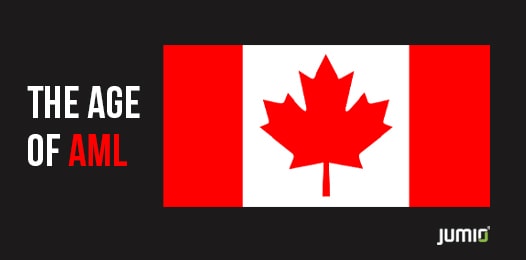
Updates to Canada’s anti-money laundering (AML) and anti-terrorist funding (ATF) regulations are about to make customer onboarding and compliance much easier for banks and fintechs because they change the way end users can verify their identities.
The Government of Canada recently published new regulation amendments to the Proceeds of Crime (Money Laundering) and Terrorist Financing Act, or PCMLTFA. These amendments attempt to align Canada’s AML regulations with international recommendations by the Financial Action Task Force (FAFT), of which Canada is a founding member.
Digital Trust Throughout the Customer Journey
How to Leverage the Jumio KYX Platform from Onboarding to Ongoing Monitoring
Canada’s Money Laundering Problem
In a March 2019 report The U.S. Department of State included Canada on its list of major money laundering jurisdictions.
“Foreign-generated proceeds of crime are laundered in Canada, and professional, third-party money laundering is a key concern,” states the report.
Another recent report estimates that $46.7 billion was laundered through Canada’s economy in 2018, and critics say weak regulations and lack of law enforcement are to blame.
What is the PCMLTFA?
The PCMLTFA is legislation directed at the detection of money laundering and terrorist financing through its registration and reporting requirements for “reporting entities,” including financial institutions. Under PCMLTFA, the Financial Transactions and Reports Analysis Centre of Canada (FINTRAC), Canada’s financial intelligence unit, collects, analyses and discloses information to help detect, prevent and deter money laundering and terrorist financing.
While standards set by the FATF are not legally binding, Canada is obliged to implement them and to submit to a peer evaluation of their effective implementation. The last evaluation took place in 2015-16, with FATF’s report outlining a number of deficiencies, which the new PCMLTFA amendments will help to address.
What Changed?
The PCMLTFA amendments will be rolled out in three stages and include, among other things, the regulation of businesses dealing in virtual currency and inclusion of foreign money service businesses in Canada’s AML/ATF regime.
The first round of regulatory amendments, which took effect on June 25, update the requirements for reporting entities to perform customer due diligence. Previous regulations required reporting entities to verify customer identity using “original, valid and current” documents and didn’t allow the use of scanned copies or photocopies. This meant that customers had to physically present their original documents in order to verify their identity.
The amended PCMLTFA now allows for the use of “authentic, valid and current” documents instead of “original” documents, thus repealing the prohibition to use scanned or photocopied documents. This measure is burden-relieving for reporting entities. It also facilitates digital customer onboarding — in other words, consumers attempting to open a new bank account no longer need to visit a physical branch office in order to provide the documents needed to verify their identity.
PCMLTFA and Online Customer Identity Verification
A recent Canadian Bankers Association survey found that 85 percent of Canadians feel confident about online and digital banking technologies, with 76 percent using digital channels (online and mobile) to conduct most of their banking transactions. Mobile banking is on the rise, with 56 percent of Canadians reporting using mobile banking in the last year, up from 31 percent in 2014.
As more Canadians turn to their computers and smartphones to manage their money, it’s important for financial services organizations to provide a seamless digital experience, and that starts with the onboarding process. Today’s banking customers expect an Uber-like experience with the ability to create online accounts in minutes, not days — anytime, anywhere. They aren’t afraid to take their business elsewhere if they encounter unnecessary friction — nearly 40 percent of potential new accounts are sacrificed during the onboarding process because of time-consuming, clunky processes.
Jumio’s AI-powered online identity verification solutions can help Canadian banks and financial organizations replace slow, ineffective and costly manual AML/KYC processes with more automated solutions that can be embedded within the account setup and onboarding experience. Learn more by visiting our Banking Digitization page.

